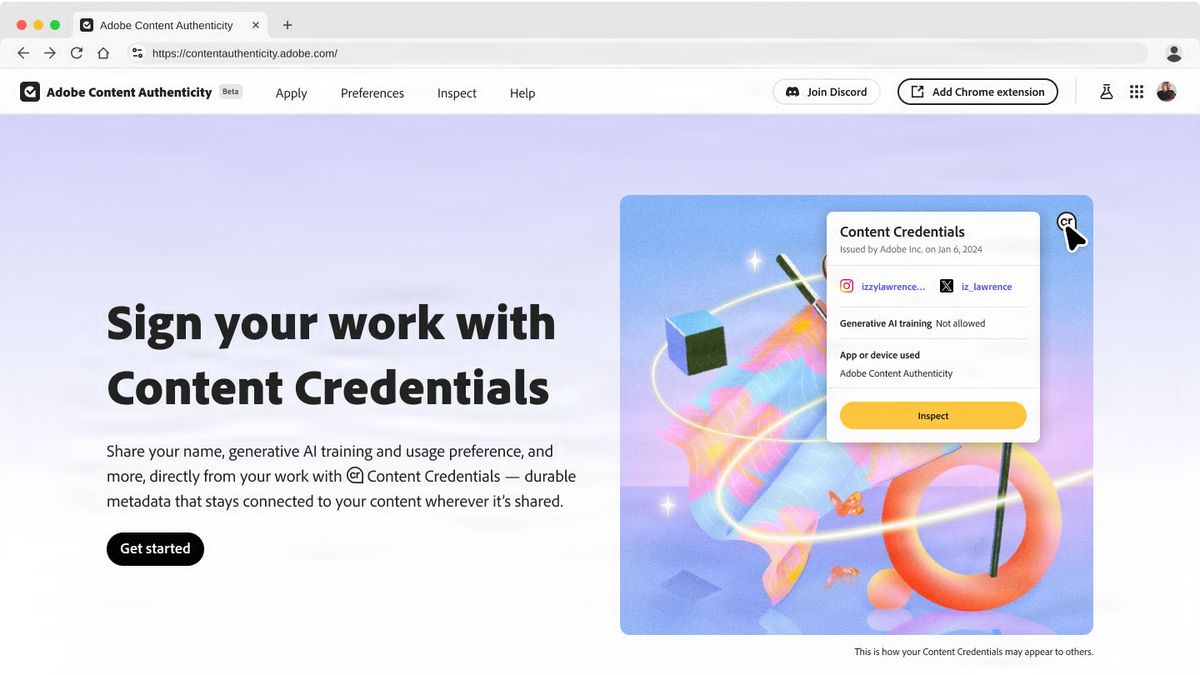Identifying AI-generated images used to be straightforward; oddities like six fingers or extra limbs made them stand out. However, as AI technology has advanced, distinguishing between authentic artwork and AI-created images is becoming increasingly challenging. Adding to the concern is the fact that many AI systems are trained on artists’ work without their consent or compensation.
While creatives generally recognize the potential benefits of AI tools, particularly for automating routine tasks, there are significant concerns over the unauthorized use of artists’ styles. To address these issues and protect creators’ rights, Adobe is launching a new, complimentary web application aimed at safeguarding artists’ work online.
We spoke with Andy Parsons, Senior Director and Head of the Adobe Content Authenticity Initiative, about the innovative Content Credentials scheme. Parsons emphasized, “Transparency is the most important foundational concept to provide an objective shared sense of what’s fact, what’s real, who gets credit for things.” He shared that Adobe is developing open-source code and standards that will be recognized by the International Standard Organization, with hopes for ratification this year or next.
Adobe’s solution involves attaching Content Credentials to images, providing users with essential details about their creation and the creator. Parsons likened this feature to food nutrition labels, stating, “We believe digital content needs a similar level of transparency, empowering consumers to make informed judgments about authenticity and trustworthiness.”
The New CR Icon
Images that have Content Credentials will display a small CR icon, which you can click to access detailed information regarding the image’s origin. Currently, this feature is viewable through a Google Chrome extension, enabling users to learn more about a given image’s provision. Parsons believes this technology could eventually become as common as the copyright symbol.
To safeguard artists’ work from being used by AI without permission, Adobe’s Content Credentials allow creators to specify if they do not want their art to be part of AI training models. The success of this initiative will heavily rely on how diligently AI companies adhere to creators’ preferences. Fortunately, Adobe has successfully engaged many major players in the industry to support its initiative.
“We are actively collaborating with leading names in AI, and while there isn’t much resistance, some seem to be waiting for legal frameworks,” Parsons noted. “However, others recognize the reasonableness of creators’ requests and want to accommodate them.” He added that collaborations with entities such as Spawning, which operates the world’s largest opt-out registry, will enhance this initiative. Some social media platforms still have not integrated visible content credentials, but Adobe is addressing that gap with their Chrome extension.

Coming into Beta
Adobe’s solution is designed to be open-source and can function independently from its Creative Suite applications, allowing it to be applied universally to any image at no cost. Beginning today, users can sign up to be notified when the beta version becomes available, which is anticipated to launch between December and February. A free beta version of the Content Authority extension for Google Chrome is available now.
With the Content Authenticity initiative, users can apply Content Credentials in batches to images, audio, and video, making them immutable once added. Parsons referred to this feature as “durable,” highlighting its potential to combat copyright infringement. Although concerns may arise regarding a potential arms race between Adobe’s efforts and hackers attempting to remove these credentials, Parsons remains optimistic, stating, “This is a strong countermeasure against copyright theft and ensures recognition of creators through their work.”
Discover more from Marki Mugan
Subscribe to get the latest posts sent to your email.









